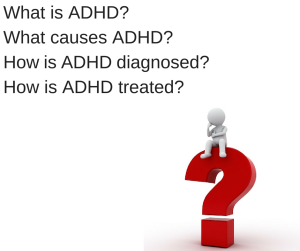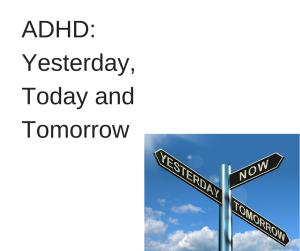 Note: I’ve divided this extensive article into a number of smaller posts. You may read this article in its entirety here: What is ADHD? – NIMH
Note: I’ve divided this extensive article into a number of smaller posts. You may read this article in its entirety here: What is ADHD? – NIMH
Attention deficit hyperactivity disorder (ADHD) is one of the most common childhood brain disorders and can continue through adolescence and adulthood. Symptoms include difficulty staying focused and paying attention, difficulty controlling behavior, and hyperactivity (over-activity). These symptoms can make it difficult for a child with ADHD to succeed in school, get along with other children or adults, or finish tasks at home.
Brain imaging studies have revealed that, in youth with ADHD, the brain matures in a normal pattern but is delayed, on average, by about 3 years.1 The delay is most pronounced in brain regions involved in thinking, paying attention, and planning. More recent studies have found that the outermost layer of the brain, the cortex, shows delayed maturation overall,2 and a brain structure important for proper communications between the two halves of the brain shows an abnormal growth pattern.3 These delays and abnormalities may underlie the hallmark symptoms of ADHD and help to explain how the disorder may develop.
Treatments can relieve many symptoms of ADHD, but there is currently no cure for the disorder. With treatment, most people with ADHD can be successful in school and lead productive lives. Researchers are developing more effective treatments and interventions, and using new tools such as brain imaging, to better understand ADHD and to find more effective ways to treat and prevent it.
- What are the symptoms of ADHD in children?
- What causes ADHD?
- How is ADHD diagnosed?
- How is ADHD treated? – Medications
- Psychotherapy and Parent Training
- What conditions can coexist with ADHD?
- How can I work with my child’s school?
- Do teens with ADHD have special needs?
- Can adults have ADHD?
- Citations
Republished from NIMH – “What is Attention Deficit Disorder?” – – Retrieved May 26, 1915 – No longer posted online. They now use an “Easy to Read” article instead. http://www.nimh.nih.gov/health/topics/attention-deficit-hyperactivity-disorder-adhd/index.shtml NIMH publications are in the public domain and may be reproduced or copied without permission.
“Photo courtesy of Master Isolated Images/FreeDigitalPhoto.net” Modified on Canva
Follow ‘s board ADHD – What we know so far on Pinterest. Follow ‘s board Executive Functions on Pinterest.





